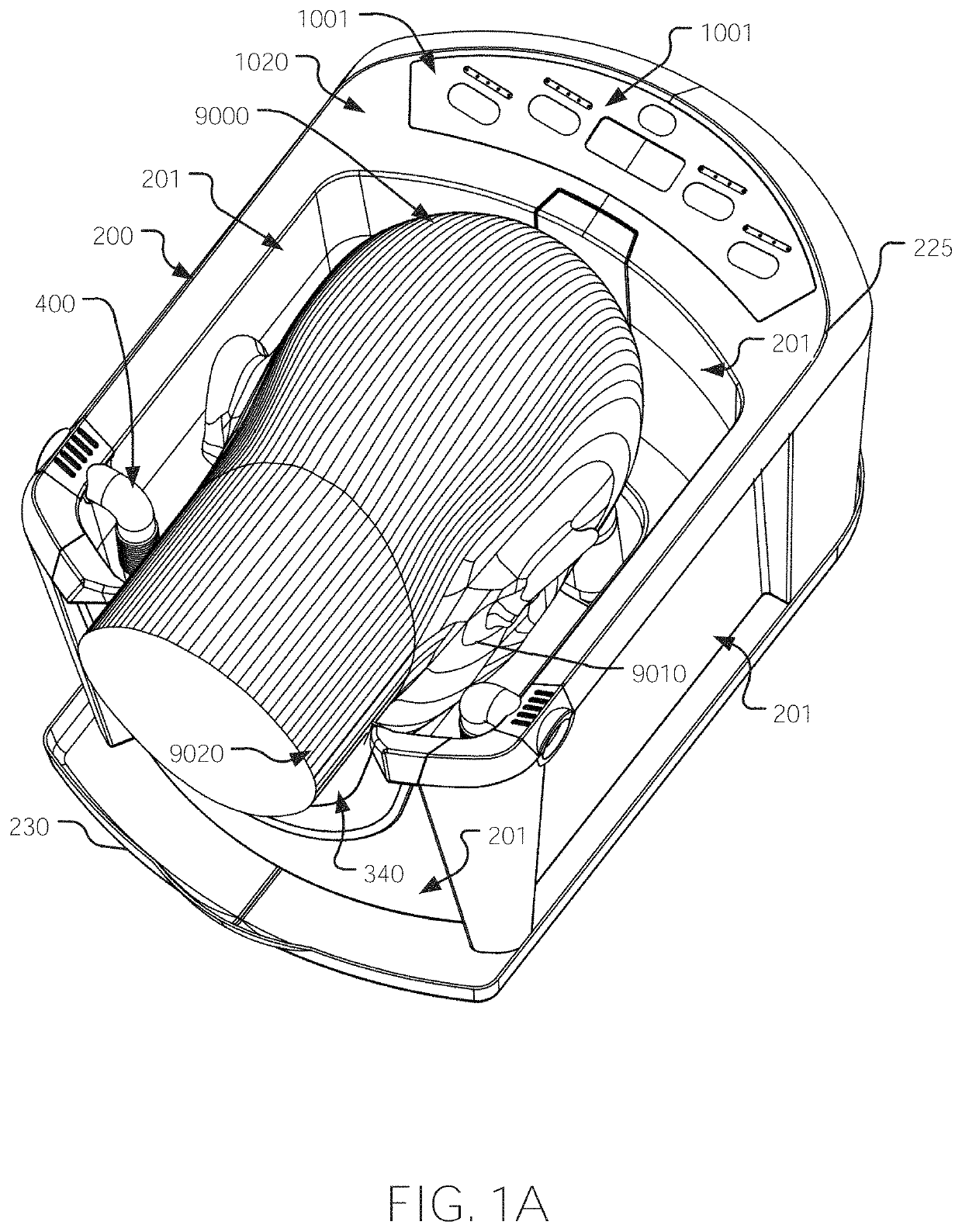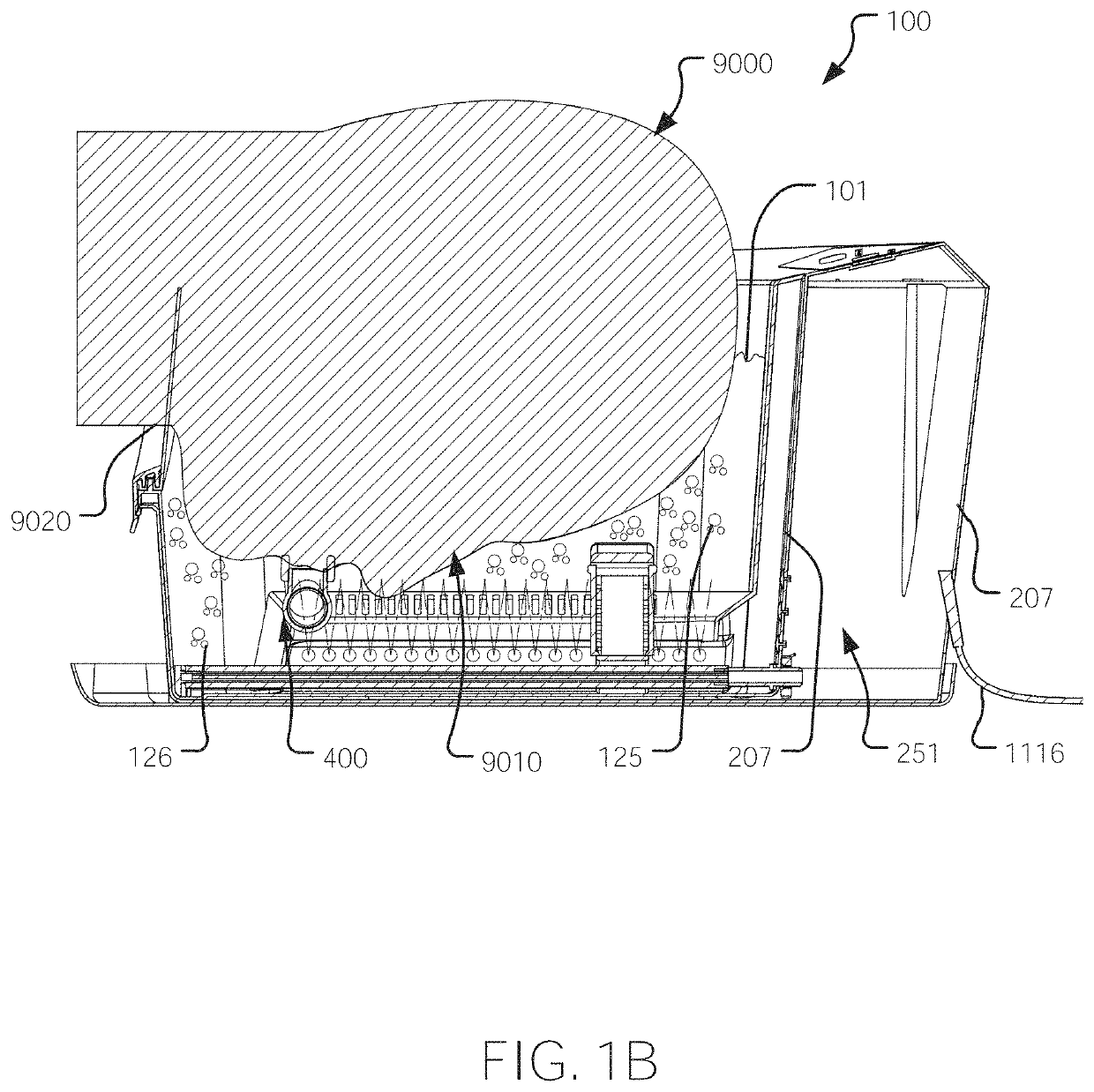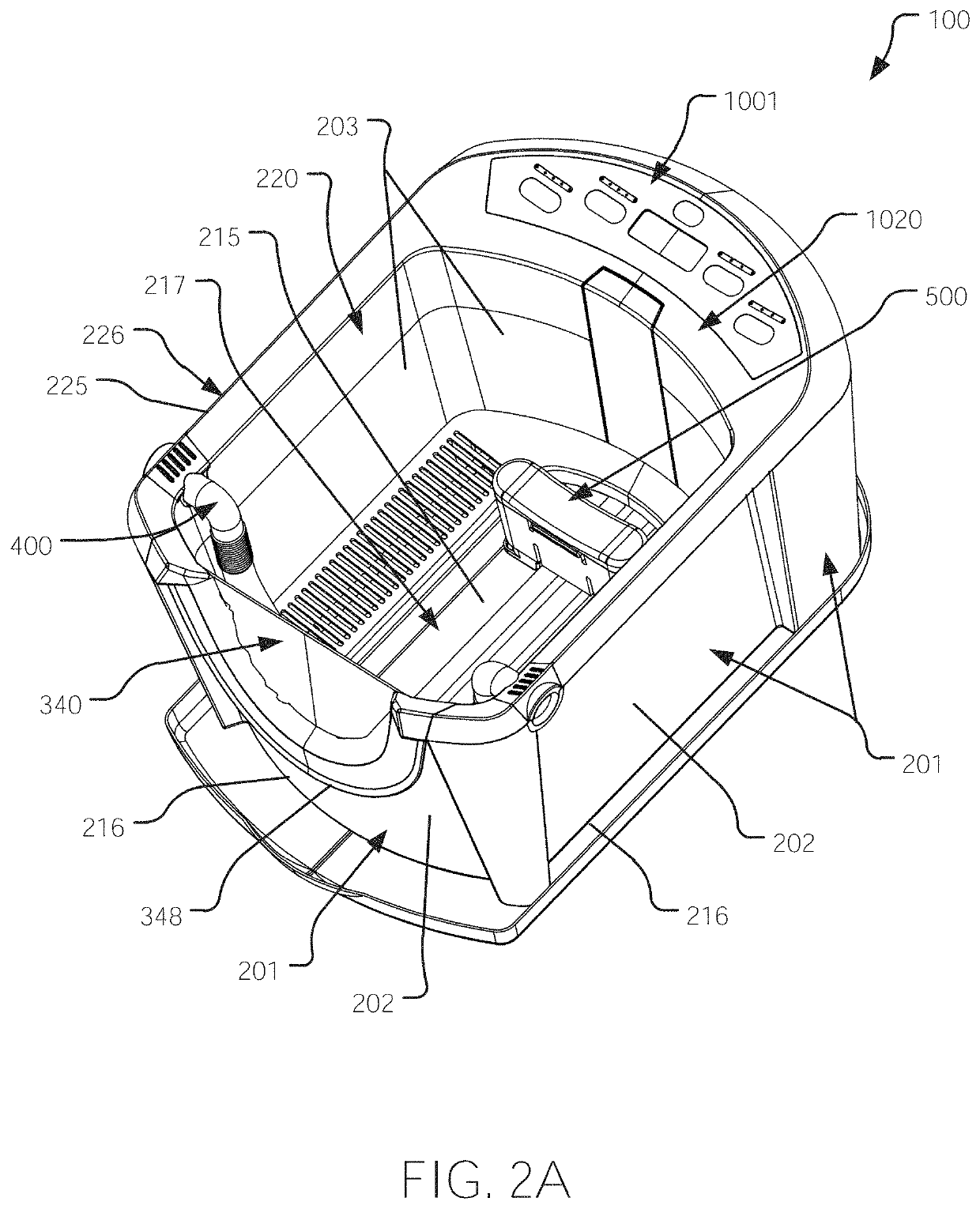Face soaking device
a technology of soaking device and face, which is applied in the field of skin soaking device, can solve the problems of affecting the healing effect of skin, so as to reduce stress, reduce headache severity, and promote blood pressur
- Summary
- Abstract
- Description
- Claims
- Application Information
AI Technical Summary
Benefits of technology
Problems solved by technology
Method used
Image
Examples
Embodiment Construction
[0639]Embodiments of face soaking devices, article soaking devices, and flexible detachable vessel covers are described and disclosed; as well as methods of use. In some exemplary embodiments these face soaking devices may comprise a vessel with gasket-accommodator, a vessel neck gasket, and a breathing apparatus. The vessel may be configured to hold an immersion liquid (liquid) to submerge a face of a user or a portion thereof. The vessel neck gasket may be removably joined to the vessel. The vessel neck gasket may be configured to comfortably accommodate a portion of the user's neck. The breathing apparatus may be in removable contact with: the vessel, with a head rest subassembly, and / or with the user. The breathing apparatus may be configured to permit the user to breathe while the user's face may be submerged within the liquid. When the vessel may be filled with the liquid to at least a sufficient level, the user may soak the face or the portion thereof, such that skin being so...
PUM
 Login to View More
Login to View More Abstract
Description
Claims
Application Information
 Login to View More
Login to View More - R&D
- Intellectual Property
- Life Sciences
- Materials
- Tech Scout
- Unparalleled Data Quality
- Higher Quality Content
- 60% Fewer Hallucinations
Browse by: Latest US Patents, China's latest patents, Technical Efficacy Thesaurus, Application Domain, Technology Topic, Popular Technical Reports.
© 2025 PatSnap. All rights reserved.Legal|Privacy policy|Modern Slavery Act Transparency Statement|Sitemap|About US| Contact US: help@patsnap.com



